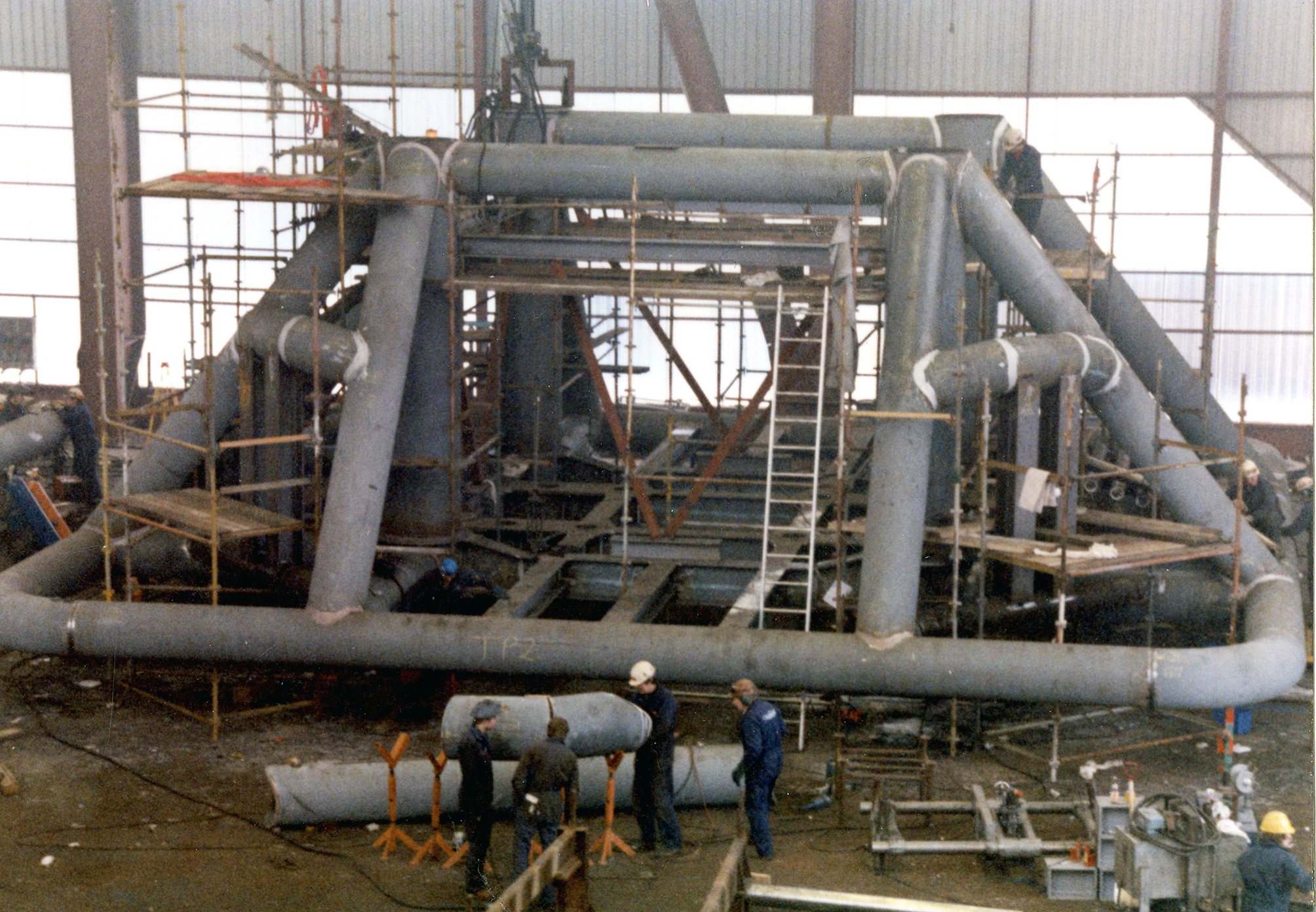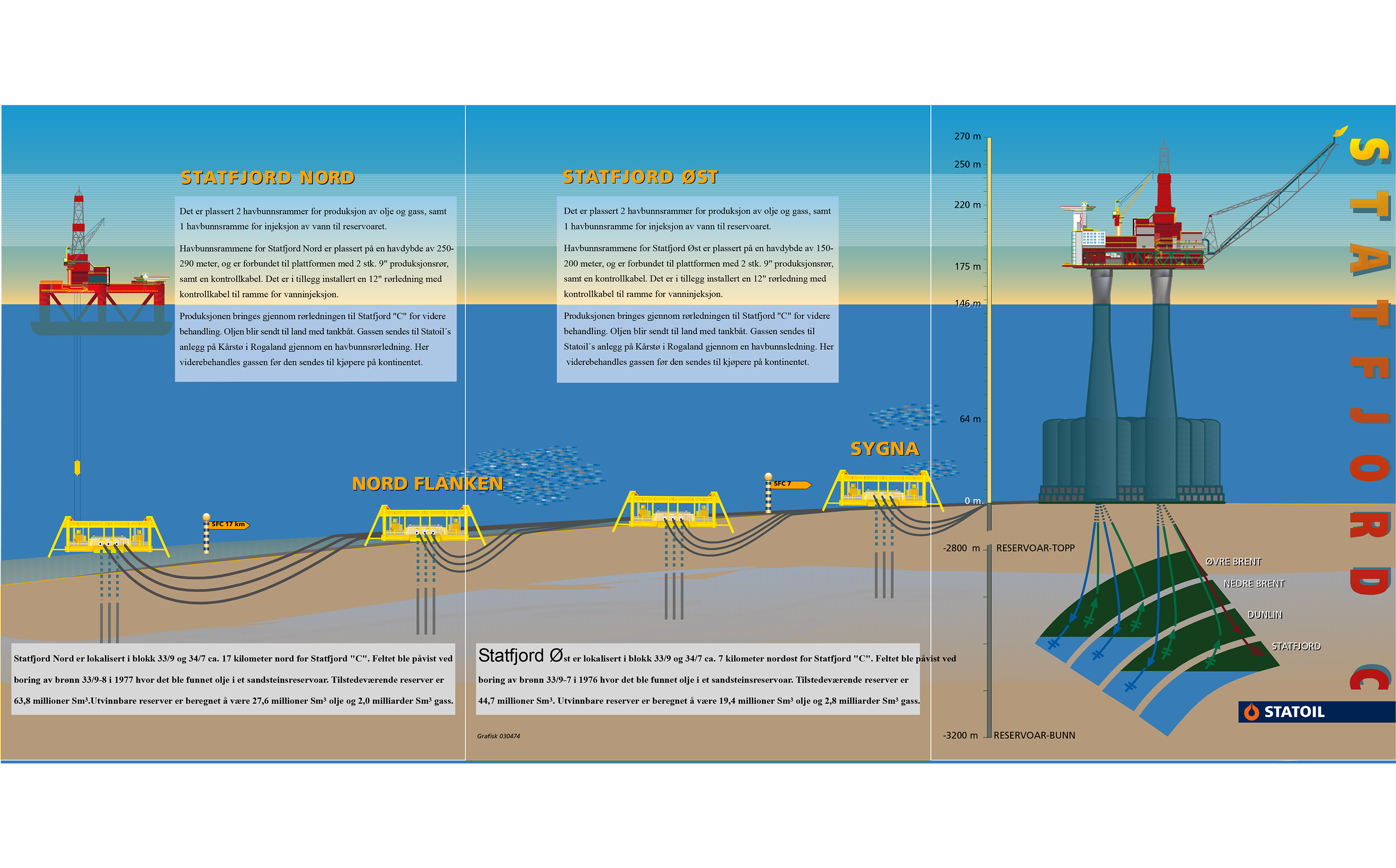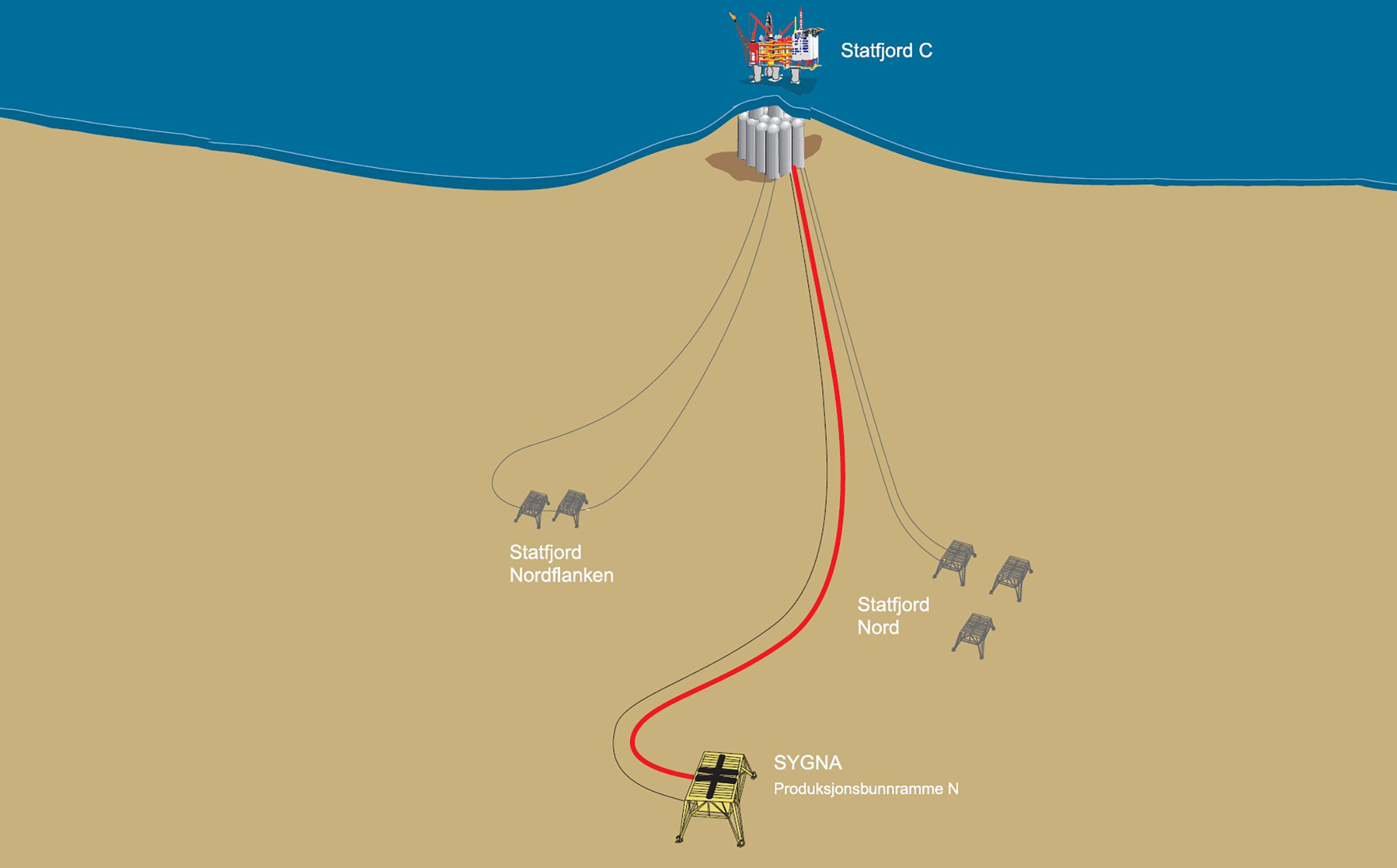Statfjord subsea
A discovery was made five kilometres north-east of the present site of Statfjord C in 1976, and another the following year 22 kilometres to the north. Dubbed the Statfjord satellites, their development represented a departure from the Condeep platforms used on the main field.

More about geology and subsea
close
Close

 Statfjord subsea,
Statfjord subsea, statfjord satelitter, forsidebilde, illustrasjon, Statfjord subsea
statfjord satelitter, forsidebilde, illustrasjon, Statfjord subsea Produksjonsstart Sygna, forsidebilde, historie, Statfjord subsea
Produksjonsstart Sygna, forsidebilde, historie, Statfjord subsea